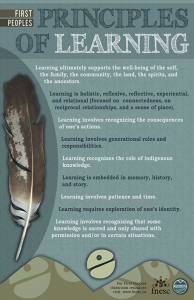FPPL, 446 Reflection
November 30th, 2021
Presentation (FPPL)
The First People’s Principles of Learning (FPPL) have been such an integral part of our learning journey in the education program. Throughout education 446, we have discussed, interpreted, and engaged with these principles in a multitude of ways. My groups focus during block 1 was FPPL #1, stating Learning ultimately supports the well-being of the self, the family, the community, the land, the spirits, and the ancestors. We chose to represent this FPPL through a tree. I have attached an image below of the concept. I still believe having pictorial or symbolic representations such as this are pertinent for students to see, create or build to develop a deeper understanding and connection to the First People’s Principles of Learning. Reading and describing these principles to our students is one thing but connecting it to a hands-on experience is another level of deeper learning.
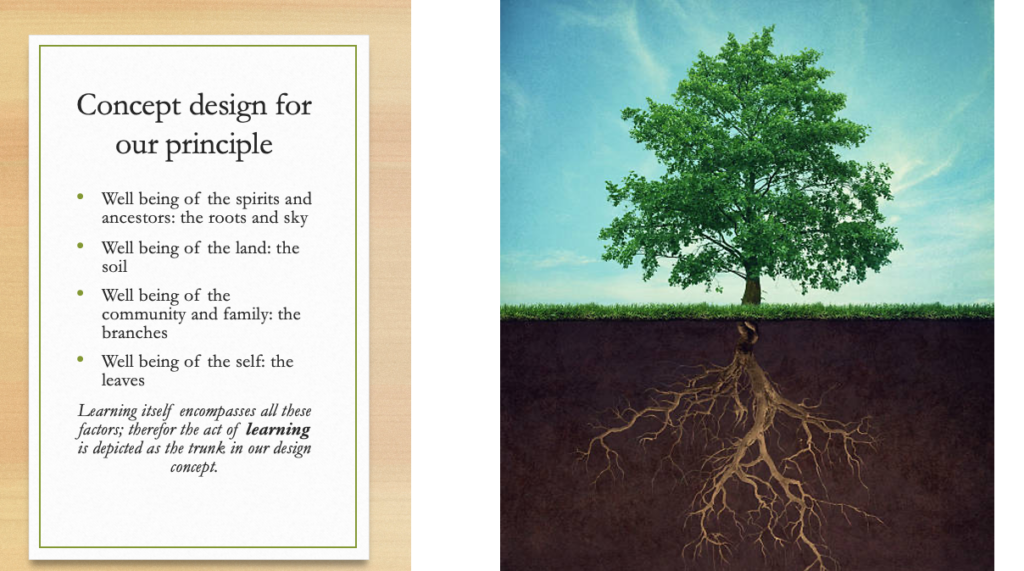
In practicum 491, one of my goals was to incorporate more Indigenous content and ways of knowing in my lessons and units. I was very happy to begin practicum during the week of Truth and Reconciliation so that I could start conversations about residential school and ways of knowing with my students. It was the perfect opportunity to allow students to ask questions in a culturally safe space. An activity we did that week was build a medicine wheel together focusing on the mind, body, spirit, and heart. As a class, we came up with ideas on how to take care of these parts of ourselves so we can function as a healthy and supportive community. It was like our class contract and promise to one another. Attached below is a photo of our classroom medicine wheel. We also put effort into teaching and incorporating the Dakelh language in our classroom. I introduced days of the week and colors at calendar, as well as encouraging students to respond to attendance in Dakelh and ask to use the washroom in Dakelh. This is just the beginning of all the things our classroom is working on and the beginning of developing a healthy and safe classroom environment where all students are treated with the same respect, love, opportunity, and choice.
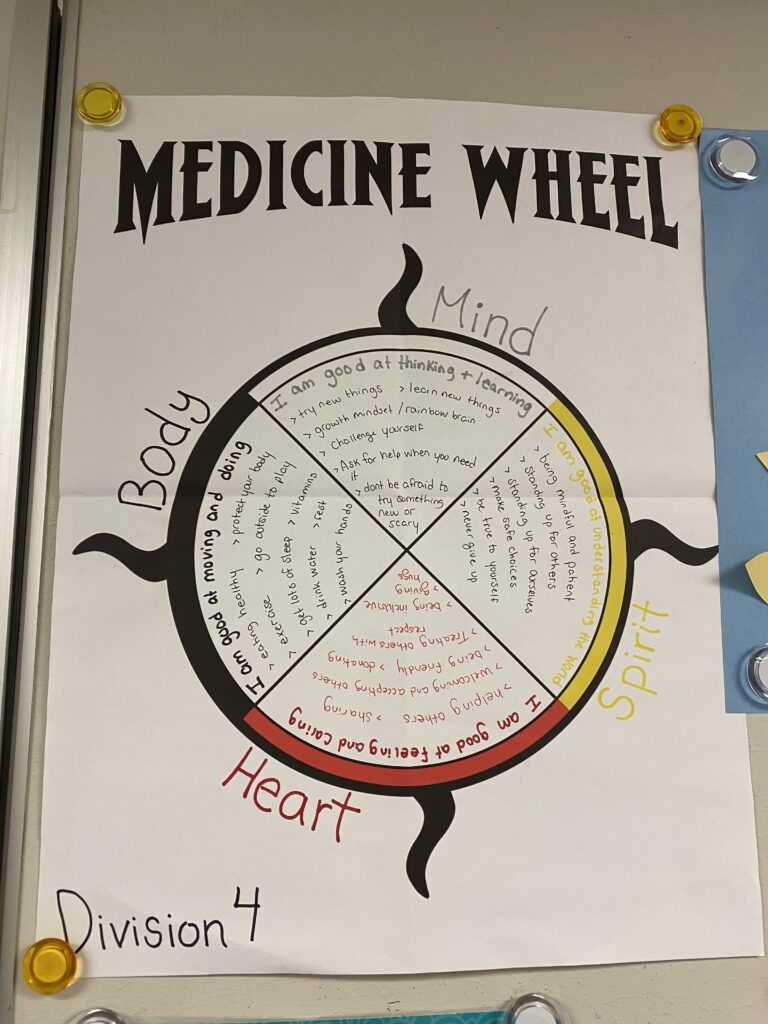
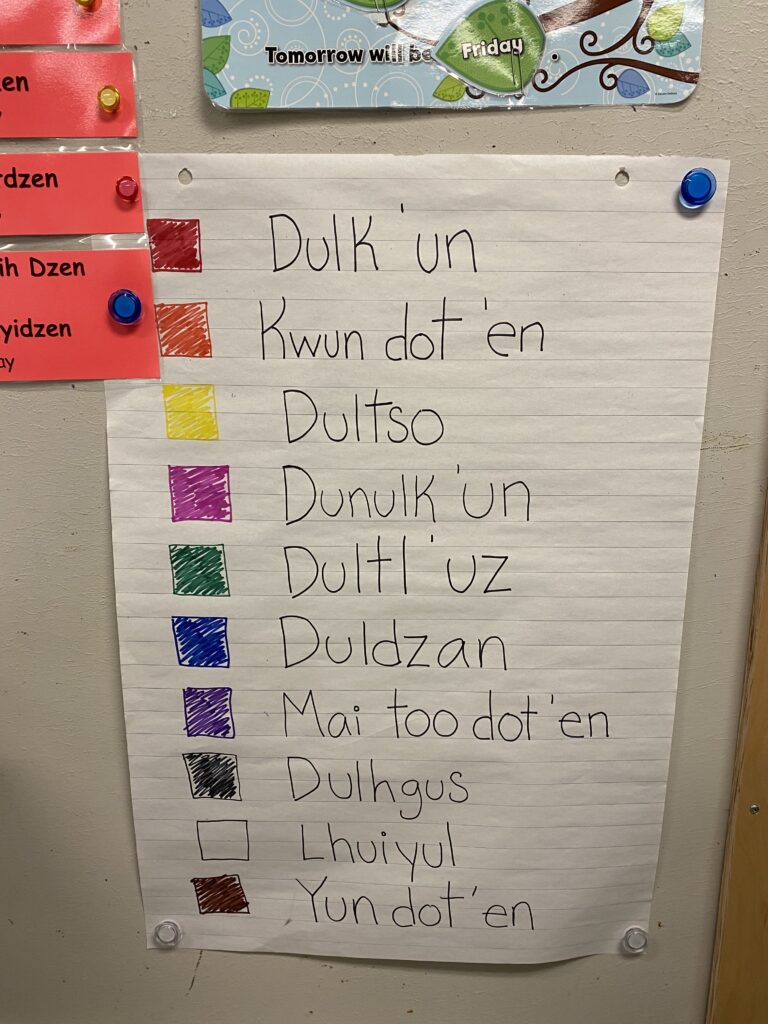
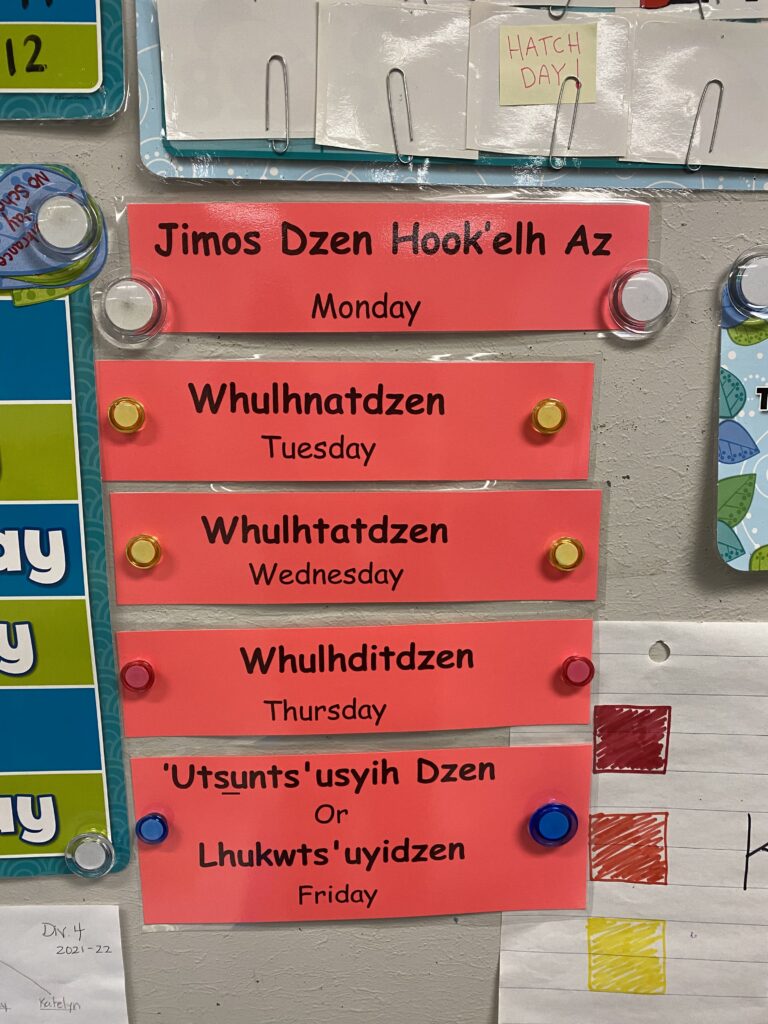
What can you do as teachers to help support Aboriginal and/or Indigenous students moving to urban areas from their communities?
The question I chose to respond to for Education 446 is stated above. I believe this is an appropriate question for me to discuss because I consider myself to be one of these students. I moved from Hazelton, B.C to access post-secondary education in Prince George, B.C. Many of my classmates from school decided not to make the same transition because they did not want to leave home. Many students who had left for their post-secondary education have also moved back to Hazelton when finished their learning journey. Community and family means everything in Indigenous culture. Your elders are your most important family members because of the knowledge and spirit they carry. I recognize how difficult and challenging it is for young students to leave their home communities or reservations to go to school. What you can do as a teacher in these situations to support Indigenous students is by creating a culturally safe environment in your classroom. It is important to honor, teach, incorporate, and recognize Indigenous ways of knowing and the First People’s Principles of Learning. Ask your students about their culture, their language, and their practices. Bring in elders from their community to share their knowledge. Let your students know that you see them and that you hear and respect them. These students may be facing more challenges than you can see. It is our job to support them and love them.
A few links to start with or refer to:
First Peoples Principles of Learning – Poster – from FNESC
http://www.fnesc.ca/wp/wp-content/uploads/2015/09/PUB-LFP-POSTER-Principles-of-Learning-First-Peoples-poster-11×17.pdf
First Peoples Principles of Learning – Blog – by Jo Chrona from FNESC
https://firstpeoplesprinciplesoflearning.wordpress.com/
Learning First Peoples Classroom Resources – from FNESC
http://www.fnesc.ca/learningfirstpeoples/
